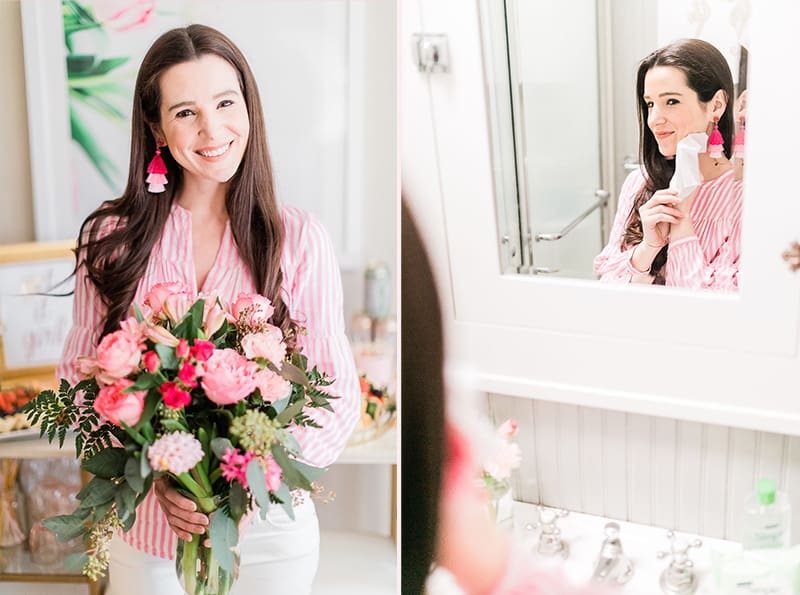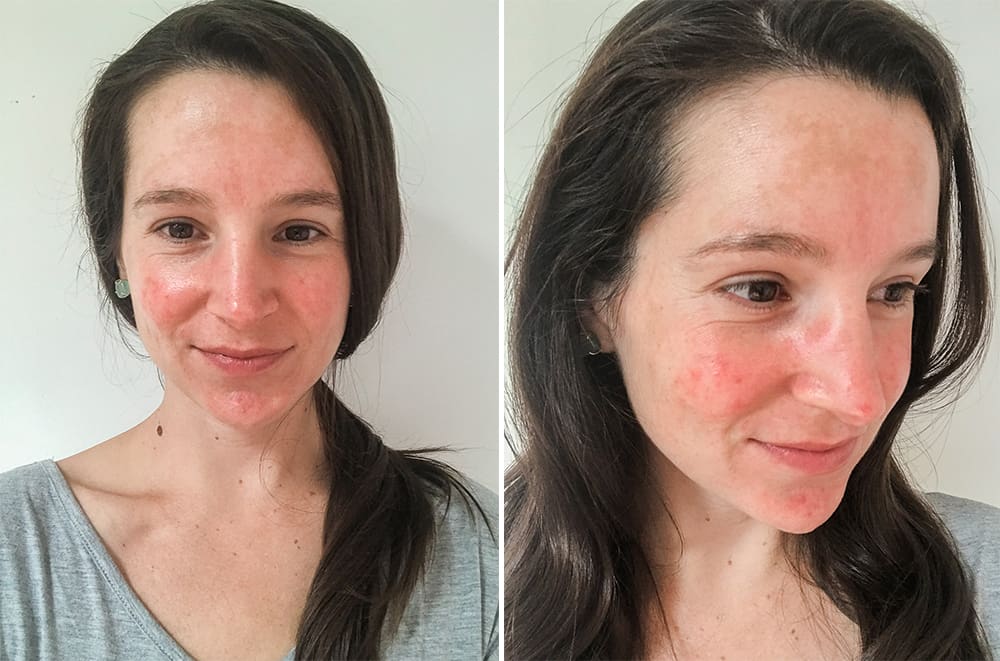This post is sponsored by Galderma and SHE Media. All opinions expressed in the post are my own and not those of Galderma.

Let’s talk about rosacea, y’all. More than 16 million Americans have it, yet many people don’t recognize its symptoms.1 I’m one of those lucky 16 million Americans, so I wanted to talk a little bit about what it’s really like living with rosacea in today’s post. First off, if you’re lost, rosacea is a chronic inflammatory skin condition that can be triggered by a handful of different things– from sun exposure, to spicy foods, to excessive emotional stress.2 Symptoms of rosacea can include facial redness, flushing, pimples, visible blood vessels, and overly sensitive skin.3 It’s definitely not a “pretty” condition to have and research has found that people with rosacea often feel insecure (and sometimes depressed) about their skin.4
It may sound trivial, but I’ve gone as far as to be a no-show at a wedding because of my rosacea. A good friend of mine from college was getting married, but the last time my college friends had seen me, I was a pageant queen with crystal clear skin. After graduation, though, I started having issues with disordered eating, and my hormones just went nuts. I essentially started going through menopause (yes, at 24), and my skin quickly changed from youthful and clear to tired, red, and bumpy. I was an insecure mess, and I just couldn’t drum up the courage to show everyone the new, and arguably much uglier, version of myself. Even though I’ve come to terms with (and learned how to tame) my rosacea all these years later, my girlfriend never forgave me for missing her wedding. We actually haven’t talked since.
To put rosacea into perspective, here are two photos of me with high definition makeup on (and amazing editing):

And here are two photos of me without makeup during a rosacea flare-up:

Aside from all the perceived ugliness and self-sabotaging, one of the most unfortunate things about rosacea is that it can actually worsen if left untreated.3 I’ve tried every cream and topical gel under the sun, and I’ve been super frustrated because none of them have given me the results I wanted to see on the bumps or blemishes (i.e. the stuff that’s hardest to cover up with makeup), at least not in the long term. So, after talking to my doctor, I’m really excited to switch it up and try an oral medication that specifically targets bumps and blemishes– ORACEA® (doxycycline, USP) Capsules 40 mg*. ORACEA Capsules are a low-dose, once-daily treatment that can help treat inflammation below the skin to reduce the visible rosacea symptoms of bumps and blemishes developing on the surface.
What really attracted me to ORACEA Capsules is the fact that the active ingredient is a non-antibiotic dose called doxycycline, it’s a low-dose formula that doesn’t work by killing bacteria like traditional antibiotic doses of doxycycline. Instead, its anti-inflammatory properties do the work. ORACEA Capsules did not show to contribute to antibiotic resistance in a 9 month clinical study.5,6 As the overly cautious daughter of two physicians, avoiding antibiotic resistance is super important to me. If ORACEA Capsules sound like they may be a viable option for your bumps and blemishes caused by rosacea, ask your dermatologist about possible treatment.

Finally, although I developed mine much earlier on (in my early-to-mid 20’s, actually), rosacea tends to manifest itself in women after age 30.1 If you start seeing symptoms, don’t panic. As is the case with most skin conditions, taking control starts with educating yourself and talking with your dermatologist to determine the best course of action. In the meantime, visit ORACEA.com for more information about rosacea triggers, skincare tips, treatment options, and how to find a dermatologist near you. Thanks so much for reading, y’all!
Important Safety Information
Indication: ORACEA® (doxycycline, USP) 40 mg* Capsules are indicated for the treatment of only inflammatory lesions (papules and pustules) of rosacea in adult patients. ORACEA Capsules do not lessen the facial redness caused by rosacea. Adverse Events: In controlled clinical studies, the most commonly reported adverse events (>2%) in patients treated with ORACEA Capsules were nasopharyngitis, sinusitis, diarrhea, hypertension and aspartate aminotransferase increase. Warnings/Precautions: ORACEA Capsules should not be used to treat or prevent infections. ORACEA Capsules should not be taken by patients who have a known hypersensitivity to doxycycline or other tetracyclines. ORACEA Capsules should not be taken during pregnancy, by nursing mothers, or during tooth development (up to the age of 8 years). Although photosensitivity was not observed in clinical trials, ORACEA Capsules patients should minimize or avoid exposure to natural or artificial sunlight. The efficacy of ORACEA Capsules treatment beyond 16 weeks and safety beyond 9 months have not been established.
*30 mg immediate release & 10 mg delayed release beads
You are encouraged to report negative side effects of prescription drugs to the FDA. Visit https://www.fda.gov/safety/medwatch-fda-safety-information-and-adverse-event-reporting-program or call 1-800-FDA-1088.
All trademarks are the property of their respective owners.
Photography by Catherine Rhodes.
References:
1 National Rosacea Society. What Is Rosacea? https://www.rosacea.org/. Accessed on March 14, 2018.
2 National Rosacea Society. Rosacea Triggers Survey. https://www.rosacea.org/patients/materials/triggersgraph.php. Accessed on March 14, 2018.
3 National Rosacea Society. All About Rosacea. https://www.rosacea.org/patients/allaboutrosacea.php. Accessed on March 14, 2018.
4 National Rosacea Society. Coping With Rosacea. https://www.rosacea.org/patients/materials/coping/index.php. Accessed on March 27, 2018.
5 Oracea (doxycycline) capsules for oral use. Prescribing Information. 2014.
6 Valentín, Sheila, et al. Safety and efficacy of doxycycline in the treatment of rosacea. Clinical, cosmetic and investigational dermatology: CCID 2 (2009): 129.


